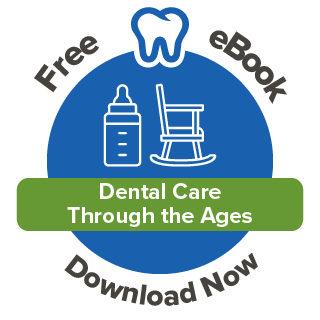By Andrew Hickey on Feb 25, 2025 @ 03:06 PM
Living with low vision can be challenging. It might limit your ability to enjoy your favorite activities and maintain your independence. You could encounter difficulties at school or work, during tasks like cooking and driving, and in your social interactions. However, there are steps you can take to manage your eye health.
Treatment strategies and resources are available, and with some lifestyle changes, you can optimize your vision and continue living a happy, fulfilling life. It's also important to consult with an eye doctor who can provide care and guide you on the latest low vision aids and therapies. Keep reading to learn more about low vision and what you can do to keep your eyes healthy and your spirits high!
Key Takeaways:
- Living with low vision can limit activities and independence.
- Challenges may arise at school, work, and home and in social interactions.
- Steps can be taken to manage eye health and optimize vision.
- There are many treatment strategies and resources for low vision available.
- Lifestyle changes can help people with low vision maintain a fulfilling life.
- Consulting an eye doctor is crucial for care and guidance on low vision aids and therapies.

What is Low Vision?
Approximately six million Americans have vision loss, with more than 26% of people being below the age of 40.
Unlike total blindness, people with low vision still have some sight. Low vision specifically is a condition where you can experience significant visual challenges that cannot be resolved by using regular glasses, contact lenses, medication, or surgery. The most common types of low vision include:
- Loss of central vision: Difficulty seeing objects directly in front of you.
- Peripheral vision loss: Difficulty seeing objects to the sides of your field of vision.
- Difficulty seeing in dim lighting conditions.
- Blurred or hazy vision: Items at any distance seem unclear.

Common Causes of Low Vision
Low vision is frequently associated with persistent eye conditions, congenital health issues, and eye injuries. Identifying the cause of low vision is crucial as it aids in determining the most effective treatment and management strategies. Some prevalent causes of low vision include:
- Macular degeneration
- Cataracts
- Diabetic retinopathy
- Amblyopia (lazy eye)
- Refractive errors
- Nystagmus or involuntary eye movements
- Brain injuries
- Vitamin A deficiency

Preventive Measures to Protect Your Vision
It is always wise to focus on preventing eye issues before they arise. Regular eye exams are the best starting point.
An ophthalmologist can identify visual impairments using various vision tests. The dilated eye exam is both routine and painless. Your doctor will ask you to read letters both near and far and will assess your ability to see objects in the center and at the periphery or side of your vision. Then, they will administer eye drops to dilate (widen) your pupils and check for other eye issues, including conditions that might lead to low vision. They will inform you of the problem and its severity.
There are many steps you can take every day to maintain your vision health. Wearing sunglasses can shield your eyes from harmful UV rays. Your lifestyle also plays a role, so ensure you have a balanced diet rich in vitamins and antioxidants and avoid habits like smoking or vaping.
Additionally, it's important to manage any health conditions you may have, such as diabetes or high blood pressure. Staying informed and proactive about your eye health can make a significant difference.

Treatment Options for Low Vision
Although low vision cannot be entirely corrected, there are treatment options available to help you optimize your remaining sight. These treatments can be paired with visual aids and lifestyle adjustments. Vision rehabilitation is the term used for low vision treatment. Its aim is to enhance your vision as much as possible and support you in living as independently as you can with your current vision.
Additionally, you might find other types of care beneficial, such as occupational therapy to learn new methods for completing tasks, mental health counseling, and support groups that connect you with others experiencing low vision.

Technology to Aid in Low Vision
A wide range of tools is accessible to assist individuals dealing with low vision, such as:
- Optical magnifiers and telescopes.
- Electronic magnifiers and screen readers.
- Products for large print and high contrast.
- Voice-to-text and audio reading technology.
- Audible devices for home use.

The Role of Insurance in Managing Low Vision
With the various treatment options available, the next step is to figure out the financial aspects of managing low vision. Insurance offers assistance with the costs of treatments, visual tools, and rehabilitation services.
Vision insurance generally covers routine eye exams, prescription glasses, and contact lenses. Solstice also offers discounts on LASIK treatment on many of it's vision plans. On the other hand, medical insurance can help with surgical procedures, as well as specialized visual aids and rehabilitation services. If your insurance coverage has limitations, you may need to pay some expenses entirely out-of-pocket.
It is helpful to understand what both your vision and health insurance plans include. Reaching out to your insurance provider can greatly assist you in making informed decisions and ensuring you receive all the necessary support for managing low vision.
Your journey with low vision is personal, but you are not alone—there is a wealth of support and information to help you navigate this path with confidence and optimism. As an example, the National Eye Institute has resources and testimonials from people who have learned to make the most of their remaining vision. We wish you the best on your journey!
Want to have Solstice benefits? Call our sales team at 877.760.2247 or email Sales@SolsticeBenefits.com
Already have Solstice benefits? See your plan details by going to https://www.mysmile365.com/ or calling us at 1.877.760.2247.





comments